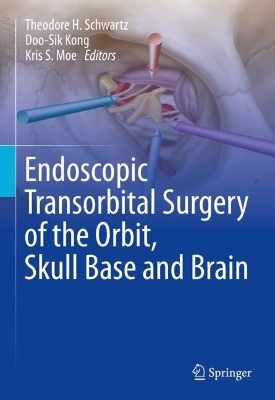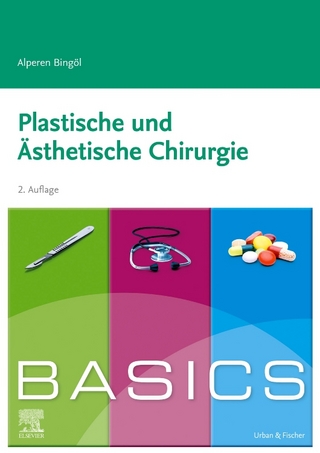
Endoscopic Transorbital Surgery of the Orbit, Skull Base and Brain
Springer International Publishing (Verlag)
978-3-031-59503-5 (ISBN)
Endoscopic transorbital surgery of the orbit, skull base and brain is a new surgical discipline that has developed over the last decade out of a collaboration between otolaryngologists, neurosurgeons and oculoplastic surgeons. Tumors and other pathology of the skull base are some of the most difficult to approach and treat for surgeons since they lie at the interface of several traditional specialties, namely the eye, the paranasal sinuses and the brain. For this reason, no single surgical specialty is fully trained to independently reach this region, which requires collaborative approaches that are technically demanding and often long and arduous procedures.
In the last decade, using the endoscopic techniques and instrumentation, otolaryngologists, oculoplastic surgeons and neurosurgeons, have together shown that the orbit can be used as a minimally disruptive corridor to reach the skull base lateral to the carotid artery as well as other areas that are difficult to access through transcranial or endonasal approaches. These approaches are now even being used to remove brain tumors involving the frontal and temporal lobes, including those that extend through the middle cranial fossa and into the posterior fossa, without visible external scars or the need for a traditional craniotomy. In addition, they have been used to clip aneurysms, treat seizure disorders, drain abscesses, repair CSF (brain fluid) leaks, and restore skull fractures - all without the additional risks, trauma and prolonged recovery of previous open surgical techniques. The literature is now demonstrating that these endoscopic procedures have comparable or improved safety compared to open surgery, while creating less collateral damage, and result in reduced patient stays.
Due to their novelty, few surgeons have acquired the necessary experience, knowledge and expertise to introduce these approaches into their practice, yet due to their safety and efficacy they are rapidly becoming a critical skill set. This is the first text of its kind to codify and proliferate these new approaches more rapidly through the country and world, appealing to otolaryngologists, oculoplastic surgeons and neurosurgeons who deal with pathology involving the skull base.
Theodore H. Schwartz, MD, David and Ursel Barnes Professor of Minimally Invasive Brain Surgery, Vice-Chairman, Clinical Research, Department of Neurosurgery, Weill Cornell Medical College, New York Presbyterian Hospital, New York, NY, USA
Doo-Sik Kong, MD, PhD, Department of Neurosurgery, Samsung Medical Center, Sungkyunkwan University School of Medicine, Seoul, South Korea
Kris S. Moe, MD, Department of Otolaryngology-Head and Neck Surgery, University of Washington School of Medicine, Seattle, WA, USA
Introduction: The Transorbital Approaches.- Part I. Anatomy and Classification of the Transorbital Approach.- Superior Eyelid Transorbital Approaches: A Modular Classification System.- Anatomy of the Orbit.- Anatomy of the Skull Base.- Part II. Perspectives on Transorbital Surgery.- The Otolaryngology Perspective.- The Rhinology Perspective.- The Oculoplastics Perspective.- The Neurosurgery Perspective.- The Pediatrics Perspective.- Part III. Sinonasal Pathology.- Sinonasal Tumors.- Part IV. Orbital Pathology.- Extraconal Tumors.- Intraconal Tumors.- Part V. Skull Base Pathology: Middle Fossa.- Meckel's Cave Schwannomas.- Cavernous Sinus.- Spheno-orbital Meningiomas: Indications and Limitations.- Spheno-orbital Meningiomas: Results.- Middle Fossa Meningiomas.- Intra-axial Temporal Lobe Tumors.- Insular Tumors.- Part VI. Skull Base Pathology: Anterior Fossa.- Traumatic CSF Leaks.- Lateral Sphenoid Sinus CSF Leaks.- Part VII. Skull Base Pathology: Posterior Fossa.- Petrous Apex: Approach and Tumors.- Petrous Apex Meningiomas.- Part VIII. Vascular Pathology.- Approach to the Sylvian Fissure.- Intracranial Aneurysms.- Carotid Cavernous Fistulas.- Ligation of the Middle Meningeal Artery.- Part IX. Technical Nuances.- Anterior Clinoidectomy.- The Sagittal Crest and Mid-Subtemporal Ridge.- Lateral Orbital Rim Osteotomy.- Harvesting a Pericranial Flap.- Reconstruction and Postoperative Care.- Comparison between Supraorbital and Transorbital Approaches.- Choosing Between the Endoscopic Transorbital and the Endonasal Endoscopic Approaches.- Transorbital Approach to the Skull Base Triangles.- Multiportal Surgery.- Part X. Complications of Transorbital Surgery.- Neurologic Complications.- Part XI. Future Applications of Transorbital Surgery.- Transorbital Robotic Surgery and 3D Printing.- 3D Training Model for Endoscopic Endonasal and Transorbital Approaches.
| Erscheinungsdatum | 28.09.2024 |
|---|---|
| Zusatzinfo | XXII, 452 p. 241 illus., 202 illus. in color. |
| Verlagsort | Cham |
| Sprache | englisch |
| Maße | 178 x 254 mm |
| Themenwelt | Medizinische Fachgebiete ► Chirurgie ► Ästhetische und Plastische Chirurgie |
| Medizinische Fachgebiete ► Chirurgie ► Neurochirurgie | |
| Schlagworte | Aneurysm Clipping • Anterior Clinoidectomy • Cavernous Sinus Tumors • Epilepsy • Middle Cranial Fossa • Multiportal Approaches |
| ISBN-10 | 3-031-59503-3 / 3031595033 |
| ISBN-13 | 978-3-031-59503-5 / 9783031595035 |
| Zustand | Neuware |
| Informationen gemäß Produktsicherheitsverordnung (GPSR) | |
| Haben Sie eine Frage zum Produkt? |
aus dem Bereich


